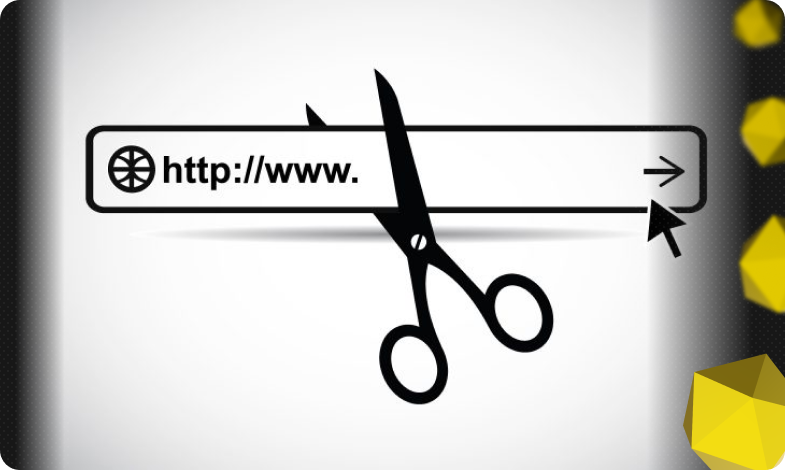Content of the article

Any online store will not generate income if visitors do not come to the resource. And it doesn’t matter how visually attractive and functional it will be.
No leads = no sales.
It is possible to get these buyers only by regularly conducting an important part of the work on the site – attracting traffic.
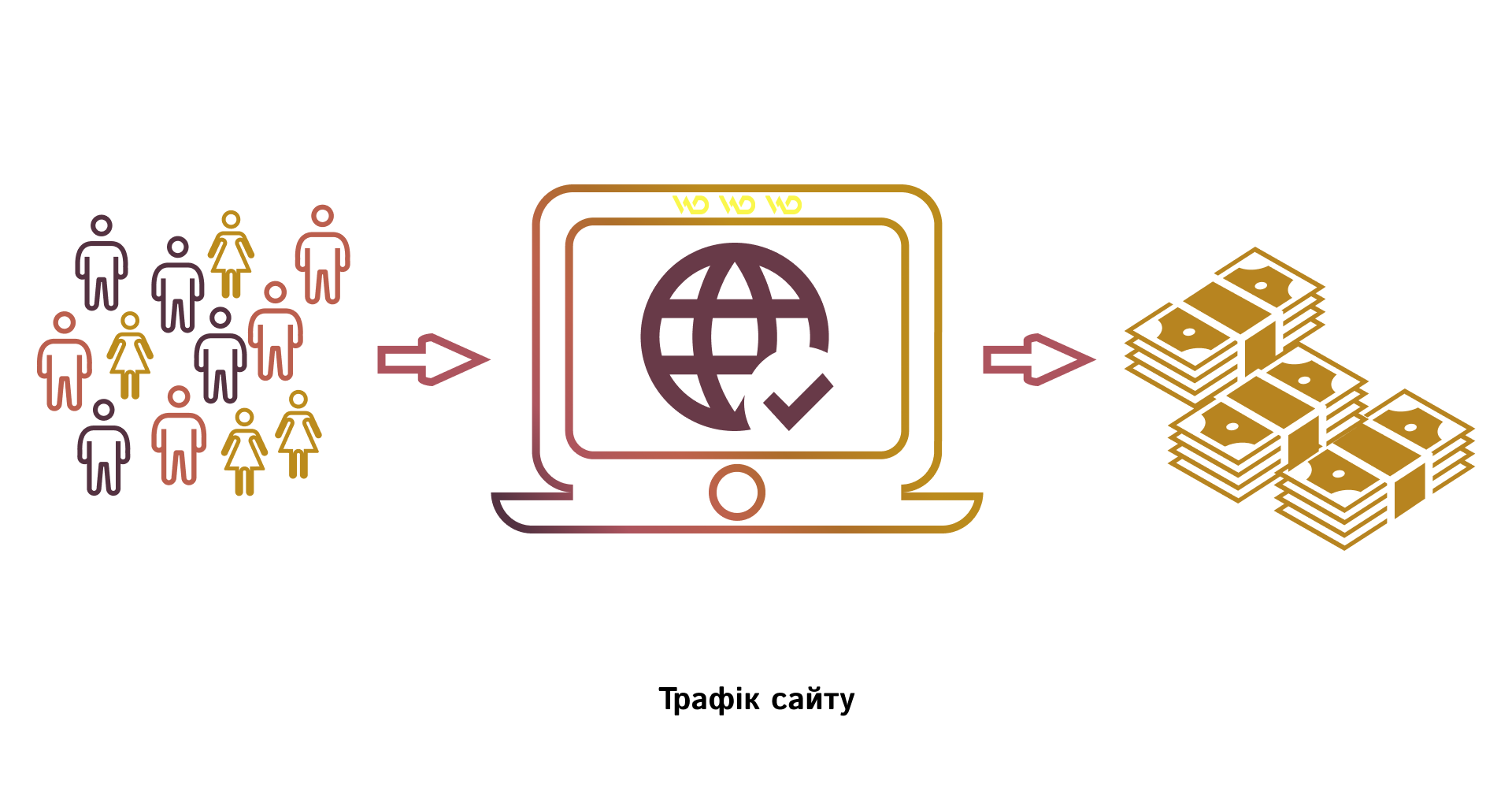
In this article, we will reveal the question of what site traffic is, why you need to make maximum efforts to constantly increase it, what are the ways to do it, and what are your competitors doing here.
What is site traffic?
Site traffic is the number of visits to a web resource, the effectiveness of which must be analyzed once in a selected period. Most often, this is done once a month, six months or a year. The indicator is monitored in order to understand how interesting the product is to potential customers, as well as to evaluate the convenience and relevance of the web resource itself and the content on it.
In other words, site traffic is interest target audience to a specific product that affects the overall income of the entrepreneur.
Types of traffic are divided into:
- informational, when the visitor enters to search for certain information;
- transactional – making a purchase or, for example, downloading a useful file;
- navigation, when the user is looking for a specific site, company;
- high-quality – the client is ready to place an order on the resource;
- low-quality – in the event of the event of people who are not inclined to take targeted actions;
- local – in a specific city, town, region;
- international, when business can be conducted in different countries at the same time.
Separately, it is worth highlighting traffic channels, that is, where visitors come from.
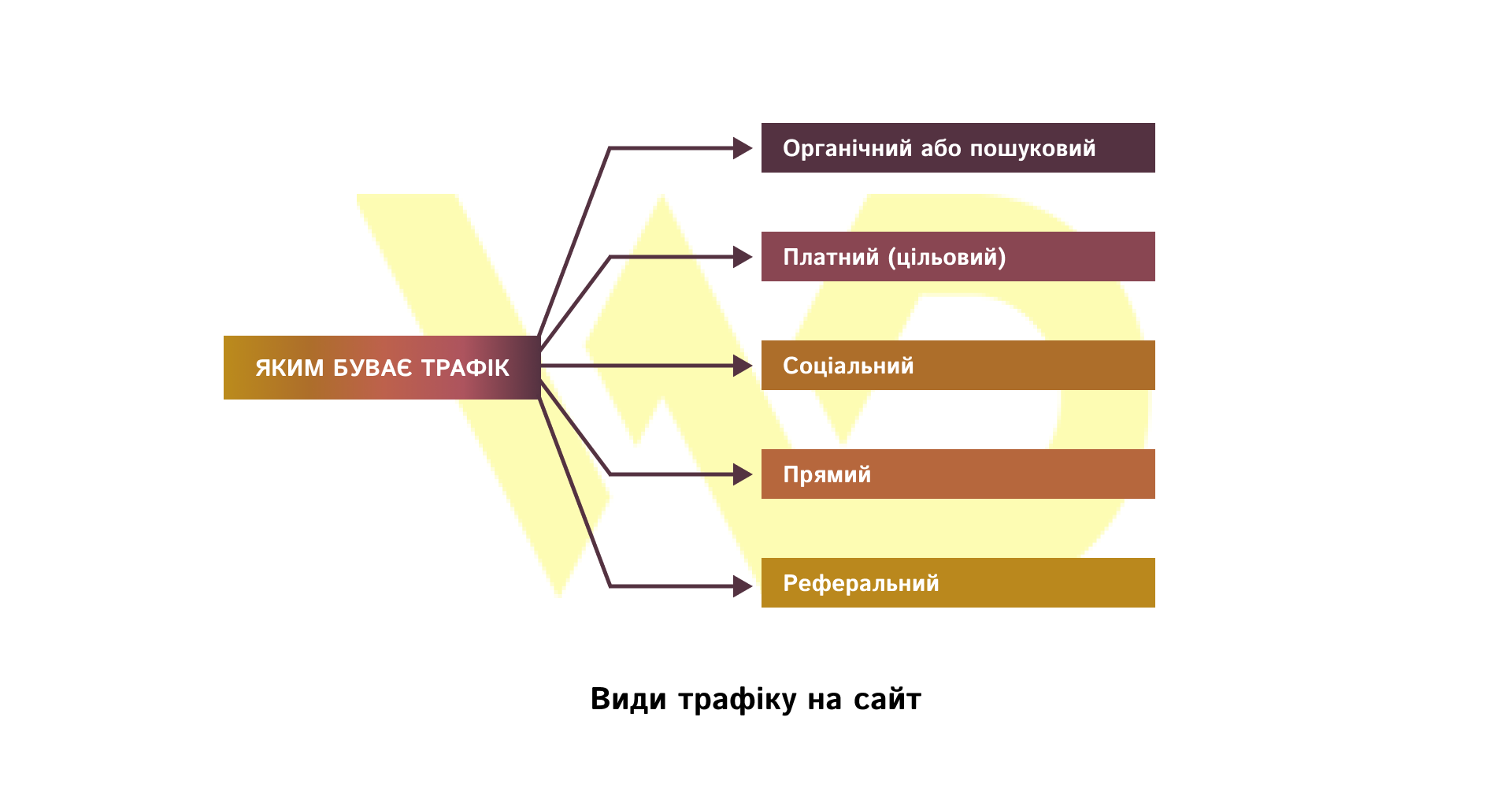
We will talk about these types in more detail later.
Why is regular traffic analysis necessary?
So, we have already found out that the traffic indicator of the site should be monitored regularly. Now let’s talk about why exactly this is needed. By analyzing traffic, you get:
- Understanding how site visitors behave on it, where they click, which pages they close and which they linger on, which information they study longer and at what stage they close the resource. Taking into account all these factors, that is, analyzing the behavior of users, it becomes possible to determine which sections should be worked on to obtain the target action.
- Determining the effectiveness of the marketing plan, namely the part of it about finding ways to get traffic. Information from which channels the main flow of traffic and conversions comes helps to determine where it is more profitable to invest more budget.
- Detection of technical problems on the web resource. If you see a tall rejection rate on a specific page of the web resource, that is, people close the page and leave the site, then there is a probability that there is a problem on this page: long loading time, poor display of text or pictures, difficult navigation or something else.
- A chance to stand out from the competition. With the help of special tools, you can determine where the traffic to the sites of direct and indirect competitors is coming from. Thus, by comparing the quantity and quality of traffic with yours, you will know your weaknesses and adjust your promotion strategy, which will increase conversions.
Having data on these four points, responding in time, and optimizing your web presence is critical to achieving your business goals.
Types of traffic to the site
Let’s analyze in more detail where traffic can come from and what are the pros and cons of each method of attracting an audience. Each type of traffic has its own characteristics, so it is worth knowing them before the budget is invested.
1. Organic or search
It is considered the most effective type. Brings the result in the form of a large number of users visiting the site, thanks to SEO promotion. This is the saturation of texts with queries that users enter into the search engine. With the correct use of SEO, your site will occupy TOP positions and receive the maximum number of new potential customers.
For example, a consumer is looking for wireless headphones and doesn’t want to go to links that are marked as “Ads.” Then it starts looking at the first few sites that are SEO-optimized.
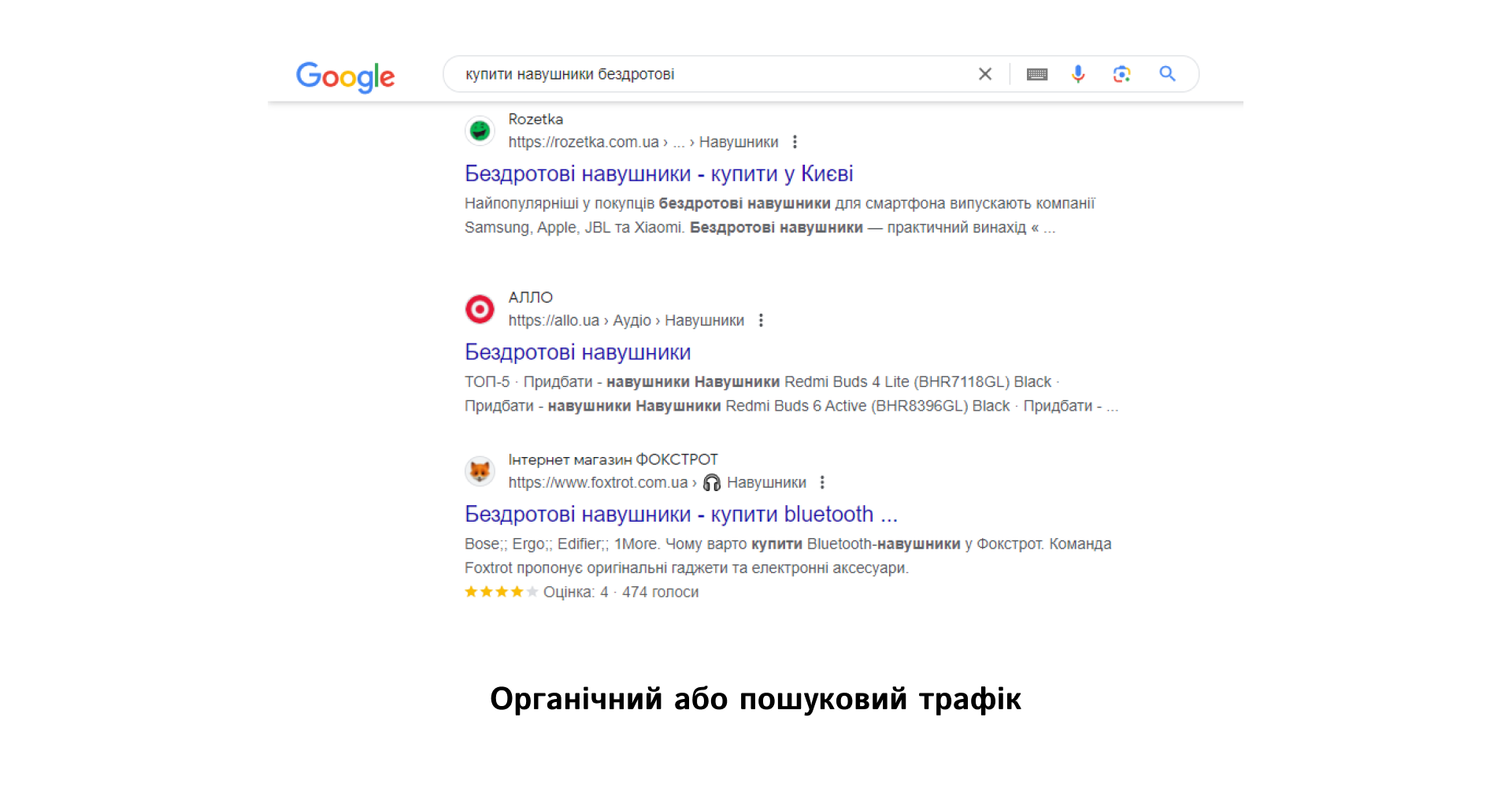
Advantages of this type:
- small investments made in advance in the optimization of the web resource bring many customers;
- search traffic is a “long game”, it does not disappear, but works effectively for a long period of time, unlike paid advertising, which is turned off immediately after the advertising budget is exhausted;
- visitors who get to the site precisely because of organic traffic, are already interested in your product and are very likely to purchase it;
- the resource inspires more trust, because many Internet users today understand that if the resource has TOP positions, it is authoritative and the search engine trusts and promotes it.
The disadvantages of this type of traffic are few, but they are:
- site optimization requires time and a lot of effort on the part of SEO promotion specialists and copywriters who will create high-quality optimized content and set up the resource correctly;
- algorithms of search engines often change and they need to be tracked in time, which is not an easy task;
- it is quite difficult to make an accurate analysis of the use of search traffic, it is not always predictable.
It is worth using an organic way of attracting the audience, but complementing it with other types.
2. Paid
The type of traffic when you receive traffic to your web resource by purchasing advertising on another site or search engine. You can choose to pay for clicks, i.e. conversions to your resource, or for the number of ad impressions.
Advantages of paid traffic:
- obtaining a quick result;
- the ability to choose an audience with the necessary demographic parameters, age, interests, and other parameters for displaying advertisements;
- controlled time and place of display of ads;
- adjusting the advertising strategy based on the received analytical data on the effectiveness of the campaigns.
Cons:
- the need to constantly pay for advertising, and this pleasure is not cheap;
- there is a sharp decrease in the amount of traffic as soon as the advertising budget ends;
- the factor of fatigue from advertising in people: you need to change the audience to whom you show advertising from time to time, otherwise the effect will be the opposite of what you want;
- sometimes paid advertising is perceived as less reliable because they may think that a site is showing up in search only because of paid advertising.
Paid traffic is effective, but you need to immediately allocate a large part of the budget to it.
3. Social
Traffic coming to your web resource from links from social networks. The most popular are Instagram, Facebook, others less often.
Advantages of the species:
- reaching a wide audience, because everyone is on social networks now;
- free creation of pages and content if you do it yourself;
- high indicators of interest in content and interaction with it;
- the ability to adjust the target to the target audience and receive a large number of interested potential customers.
Cons:
- maintaining accounts, creating high-quality content and monitoring performance takes either a lot of your own time or requires additional investment in hiring SMM specialist and targetologist;
- algorithms and policies of platforms change from time to time, and if you do not notice it in time, you will get a decrease in audience reach;
- there is very high competition in social networks, so you need to invest money in advertising so that your content is seen;
- social media traffic often has a lower conversion rate than other types of traffic.
It is worth choosing this type of traffic if you know for sure that the majority of your target audience buys through social networks. Then the invested time and money will pay off.
4. Direct
The simplest type, when the user purposefully searches for a site at an address known to him.
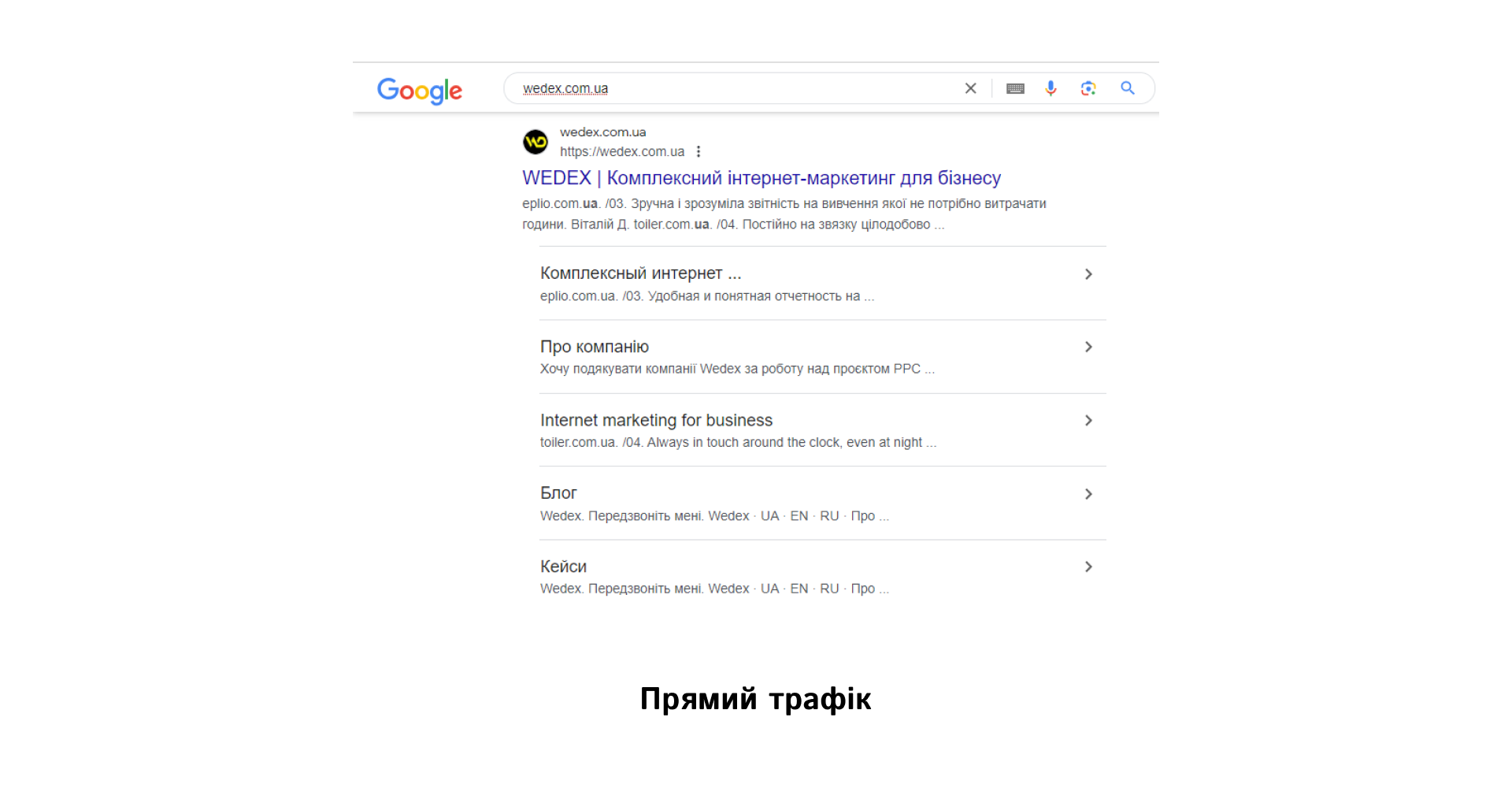
Advantages:
- high coefficient conversions, because visitors are immediately looking for your site, are already familiar with the business and products, and are most likely ready to buy;
- search engines increase the position of a web resource if they see that people are searching for it by name; for them it is a signal that the resource is popular;
- with direct traffic, we get the most accurate analytics;
- the bounce rate is low because it is highly likely that the visitor is not on your site for the first time.
Among the disadvantages:
- small coverage: visitors rarely remember the specific name of the site;
- traffic is almost not growing, and it is difficult to get a new audience without using other types of traffic to the site;
- it is not up to you whether a person will search the site in this way, so analytics is impossible.
You can get this look by attracting offline advertising or hoping for “word of mouth”. So, in this case, it is necessary to actively promote the brand in all ways.
5. Referral
This is a transition to your site from any other web resource using a direct link left there.
Advantages of the referral type:
- generating referral traffic can be targeted, because visitors go to your site from a related site;
- trust in your business is higher than if a potential customer goes simply from a search engine;
- referral traffic can help to profitably diversify all sources of traffic and reduce the risks of using any type of traffic to a greater extent;
- increases brand recognition.
Disadvantages:
- the number of transitions to your site depends very much on the resource where your link is placed, including on its attendance;
- conversions won’t be high because visitors didn’t plan to buy on your site and likely aren’t familiar with the brand.
Weigh all the “pros” and “cons” and allocate the budget so that the chosen type of traffic gives as many customers as possible and helps to stay ahead of the competition.
Services for checking site traffic
When attracting selected types of traffic, it is important to analyze their effectiveness in order to prevent or stop wasting money in time. Special services help to conduct regular analytics.
1. Google Analytics

Currently, it is the most popular tool that helps track many indicators on a web resource. Google Analytics 4 collects data on user behavior on the website or mobile application and issues reports containing information on the amount of total incoming traffic, new and returning visitors, quality of engagement and retention, conversions and events. GA 4 can also help you define your target audience because it collects demographic and other visitor data.
There are two versions of the product:
- free standard Google Analytics 4;
- paid Google Analytics 4 360, adapted for businesses.
The reports generated by Google Analytics are in the form of graphs, diagrams or charts that can be compared with each other depending on the selected period.
2. Adobe Analytics
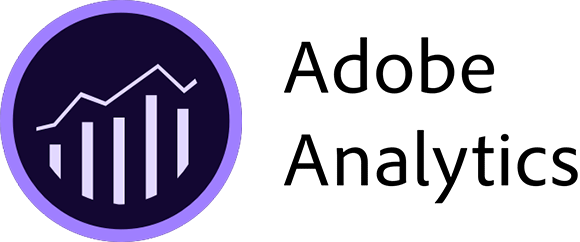
This tool is mostly intended for enterprise users who understand analytics and data collection. Adobe Analytics, as well as Google Analytics, collects information about the activity of visitors on the resource, that is, their actions, and the characteristics of the audience that is interested in the site.
It is interesting that Adobe Analytics displays all this data not only in the form of reports for the selected period, which have the form of Excel tables, but also in real time.
Another advantage of Adobe Analytics is the ability to choose exactly what information you want to evaluate now, and everything else can easily be excluded from the report.
This service is paid, but a detailed analysis with a large number of indicators will help to effectively adjust the marketing strategy to achieve better results.
3. Matomo Analytics
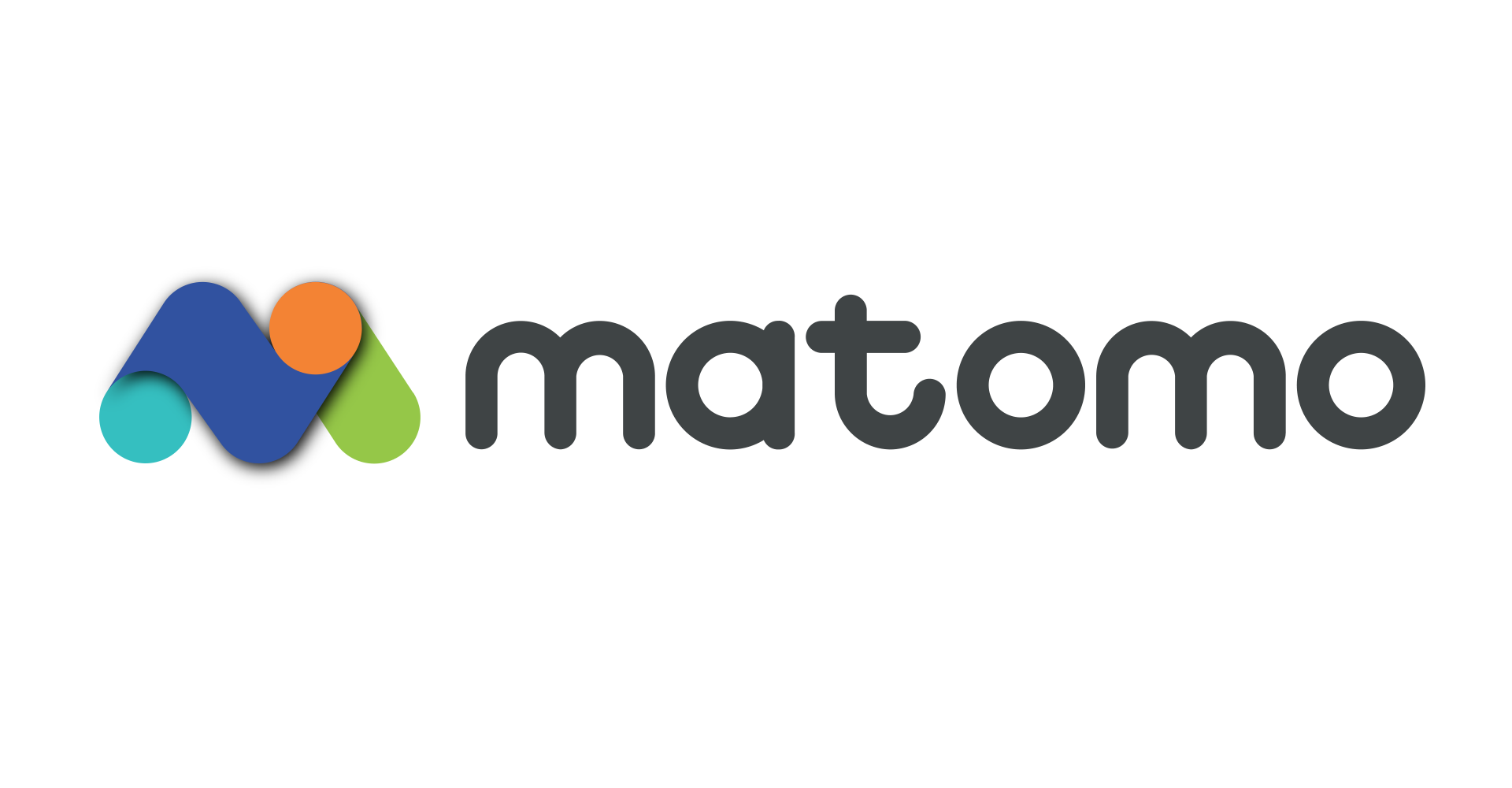
The Matomo Analytics service is essentially an analogue of Google Analytics, and even its developer positions the tool as such. MA is open source and helps analyze web traffic to improve the quality of the web resource and stay ahead of the competition.
There are two types of product:
- free (provided it is installed on your server), which displays:
- general statistical data;
- visitor actions;
- clicks;
- availability and effectiveness of advertising campaigns, conversions, links;
- relevance of key requests;
- the number of transitions and traffic sources;
Also, here you can segment visitors, get a report for a certain period and in real time.
- the premium version, in addition to all free features, has:
- heat maps;
- efficiency analytics sales funnel and the number of visitors;
- ranking of key queries and others.
4. Clicky
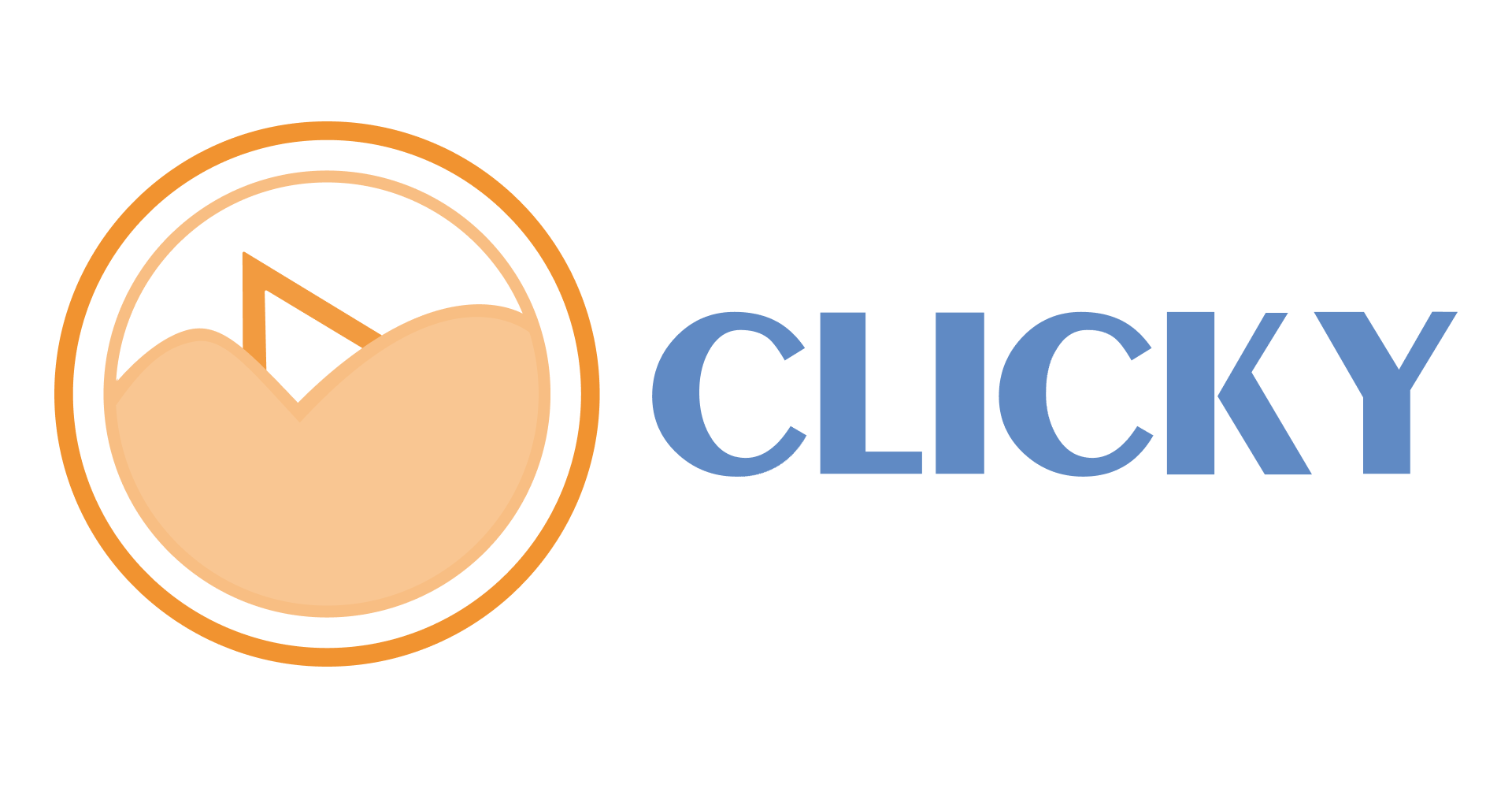
Clicky is a real-time web analytics tool. As in previous services, there are two versions:
- free, provided there are up to 3 thousand views per day;
- paid with advanced features.
What Clicky offers:
- segmentation of users to track their actions and traffic sources, as well as location;
- general analytics regarding incoming traffic, page views, file downloads, registrations, duration of stay on the web resource;
- real-time heat map viewing mode to collect more detailed analysis regarding clicks, transitions, amount of time spent on individual pages of the site;
- filtering bots, searching for duplicate pages and checking domain registration to obtain a high-quality report;
- analytics of advertising campaigns;
- video analytics;
- providing reports for the selected period and others.
5. Google Search Console
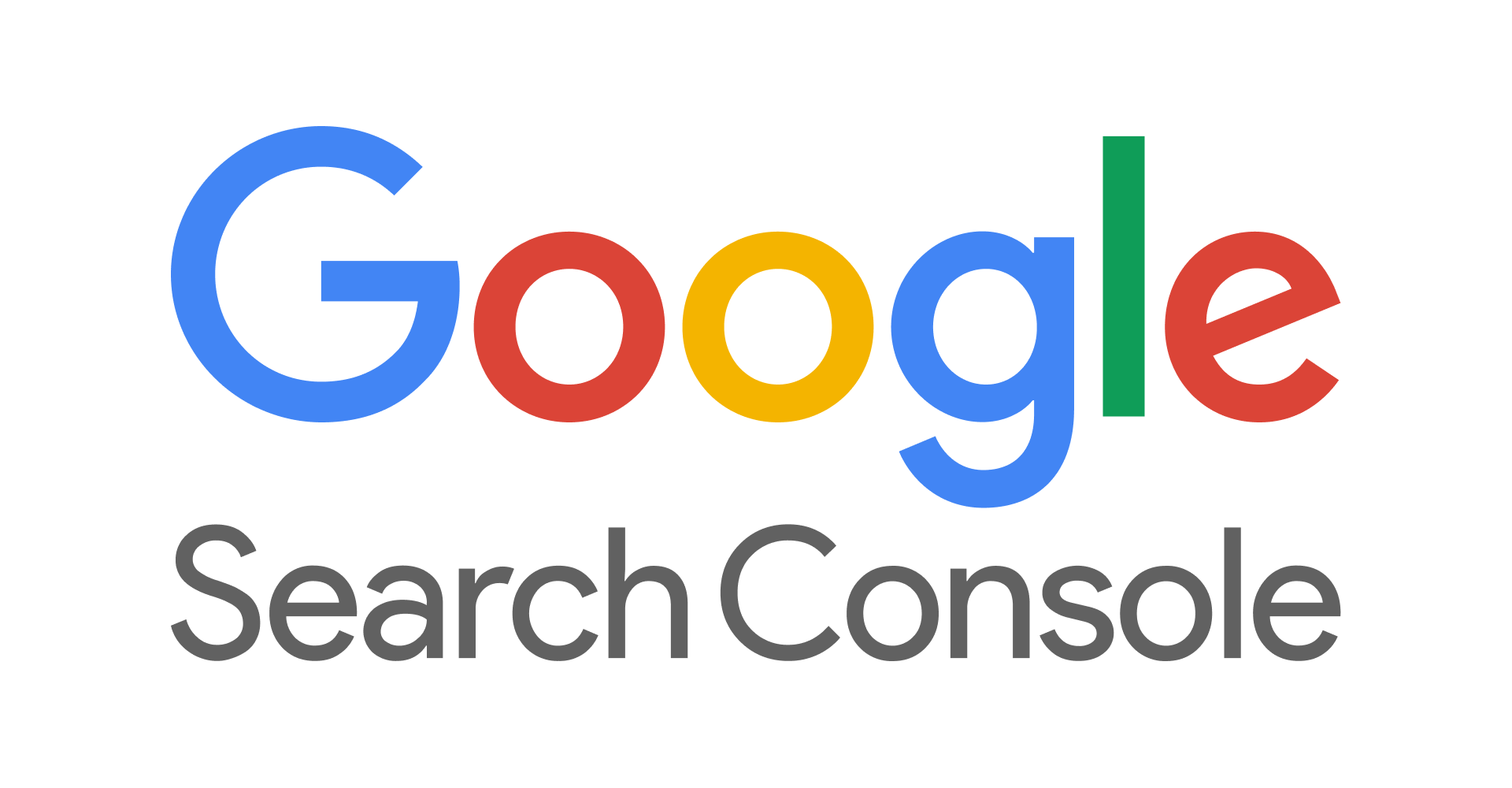
This is a free tool for analyzing a web resource from the point of view of search engine optimization and features of site functioning.
Thanks to Google Search Console the resource owner can see:
- position of the site in search results, ranking;
- technical errors or other problems in functioning;
- availability of links to the site;
- page indexing;
- tips on optimizing page loading speed;
- key queries by which potential customers find a web resource and more.
Google Search Console also allows you to get reports.
How to find out about the traffic of competitors’ sites
Some entrepreneurs believe that there is no point in analyzing competitors’ sites, but in vain. This will allow you to see in advance whether the product that you plan to bring to the market is relevant in a certain location, which will save your budget as a result.
Also, the entrepreneur will find out the demand for the niche, the quantity and quality of the possible incoming traffic in case of entering the TOP, the presence of seasonal fluctuations and the effectiveness of promotion tools used by competitors.
Among the interesting analytical services, it is worth noting:
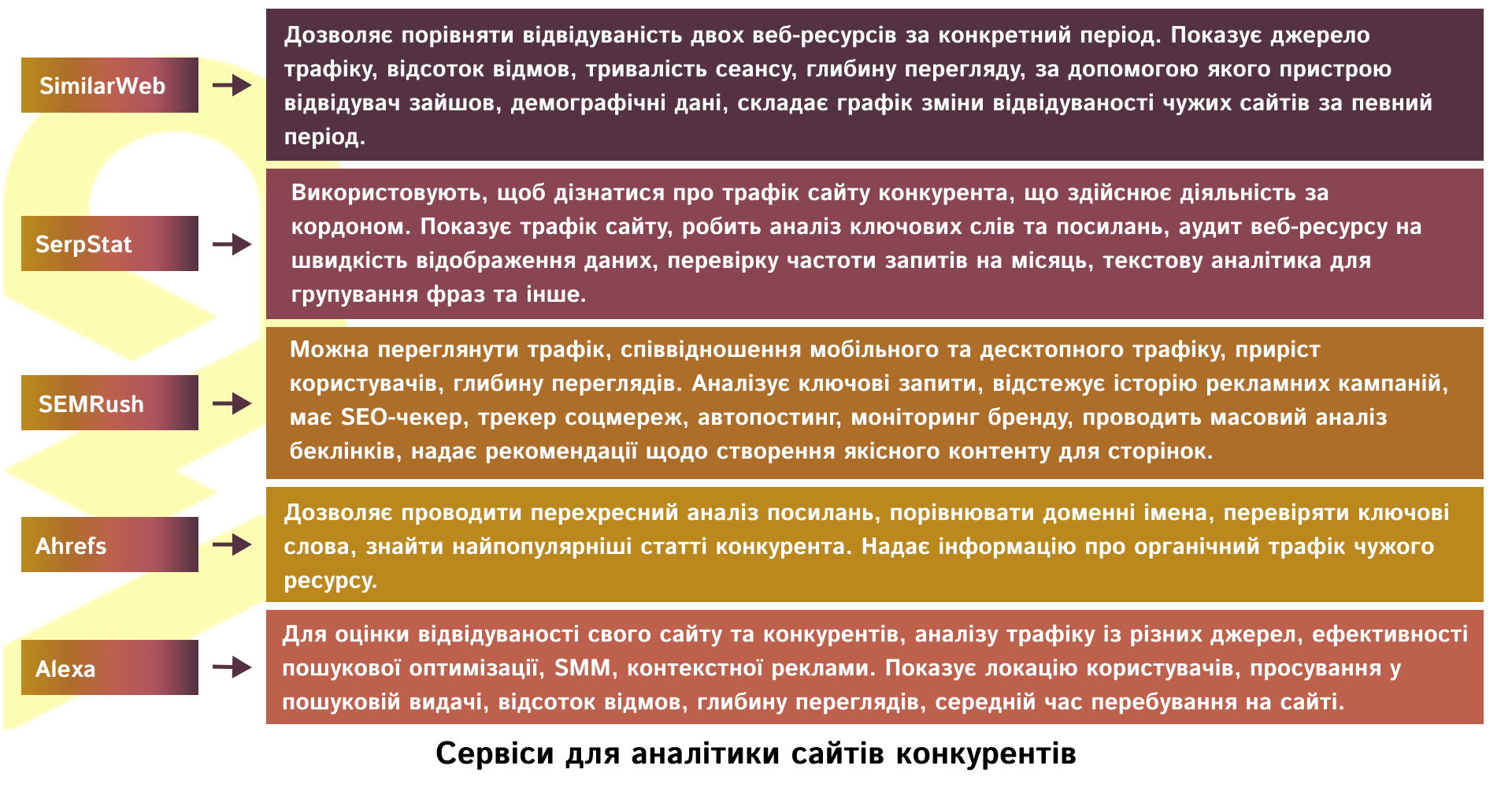
Important: for the analysis, it is necessary to take several of the most successful competitors, and not one.
The obtained data will help to develop an effective product promotion strategy or to adjust the existing one. And this, in turn, will reduce the amount of money spent on testing advertising campaigns.
How to increase site traffic
If you ordered the creation of a site and content from experienced specialists and already have a powerful base, it’s time to engage in active promotion. This stage is very responsible, because, as we already know, the amount of incoming traffic should be as large and high-quality as possible in order to make a profit.
There are paid and free traffic sources, each of which has its own characteristics. Let’s analyze the most used ones.
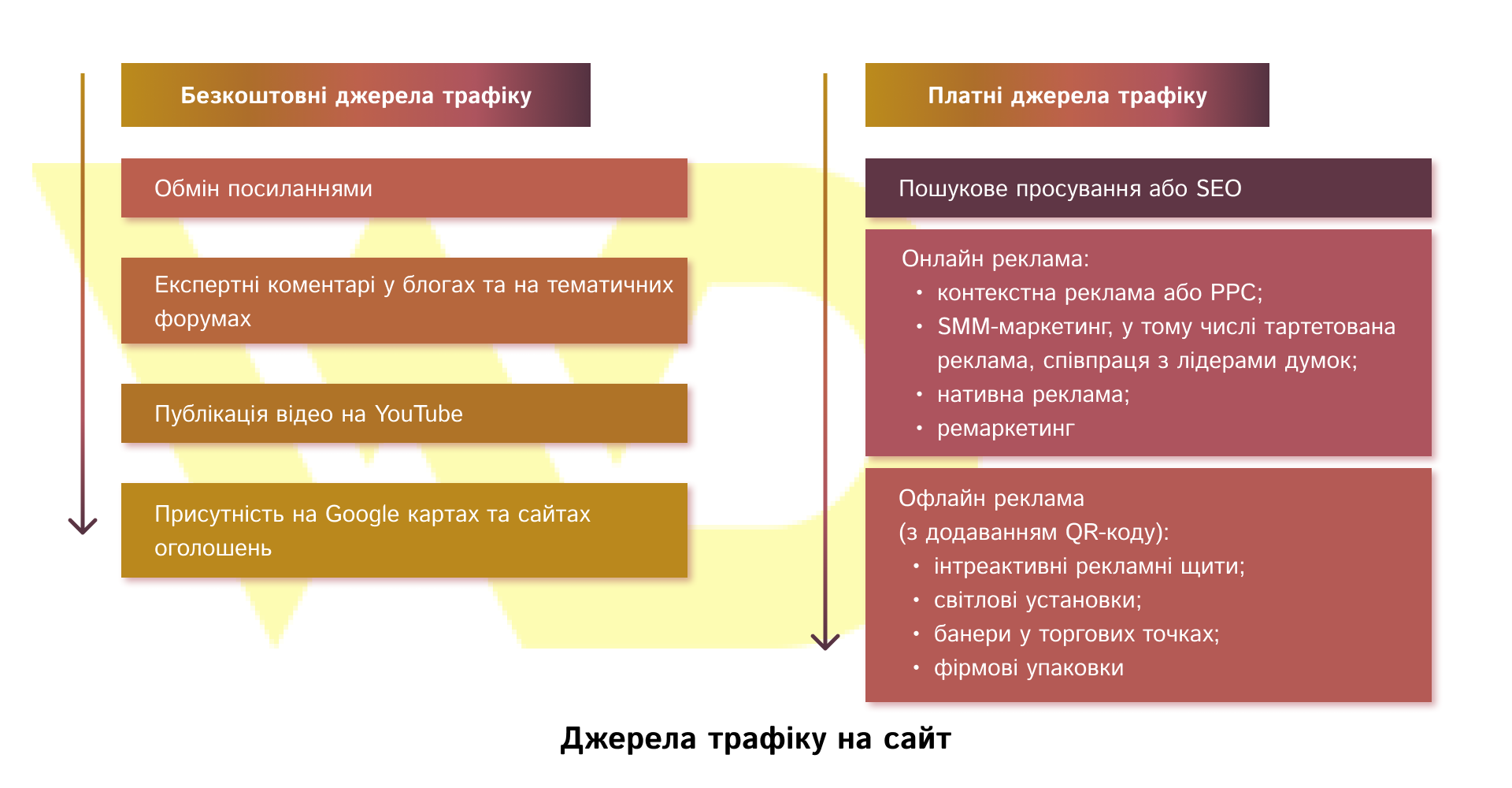
Free sources of traffic to the site
It is worth noting right away: no matter how attractive free promotion methods are, they have one big drawback – it takes a lot of patience and time to get results. But you should not neglect them, because by combining different sources and analyzing the amount of traffic, you can improve your strategy and sales.
So, free promotion methods to consider include:
- Exchange links
You can find similar sites and agree on mutual advertising. For example, posting blog articles with a link to a partner web resource or banner. - Expert comments on blogs and thematic forums
In fact, it takes a lot of time, but this method will help increase brand awareness and build trust. It is necessary to answer questions in a blog or forum in a qualitative and comprehensive manner and to be able to organically mention your brand. - Publishing a video on YouTube
This is a conditionally free method if you ask for help to create a video from other specialists, such as a videographer, editor, etc. But now everyone is watching YouTube, so why not promote yourself there by producing useful and interesting videos? - Presence on Google maps and advertisement sites
Very simple and effective. If you have a local business or an online store, post your company information there and get free traffic. When searching through Google for a product or service in a specific city, there are necessarily results on Google maps in the output.
Paid traffic sources
Of course, in order to get the result faster, you need to immediately allocate a considerable budget for promotion. However, these investments pay off, so it is worth considering each of the methods and combining them to achieve marketing goals.
1. Search Engine Optimization or SEO
Here, some specialists may argue whether this method should be classified as paid. But we are sure that it is, because preparing the site requires a specialist with a lot of experience, and his work must be paid. Further ordering of texts in SEO copywriters.
SEO optimization should be comprehensive, that is, both external and internal. And also include the following works:
- technical and seo audit of the web resource;
- analysis of competitors’ sites and improvement of yours;
- web analytics settings;
- collection of the site’s semantic core and clustering of key queries;
- writing competent technical tasks for texts and the texts themselves;
- gradual creation of a high-quality mass of links;
- constant monitoring of user behavior and overall site performance.
Provided these points are fulfilled, the site will work at its maximum. And to check the work of hired specialists and really get an improvement in performance, do the following from time to time:
- find and analyze competitors’ sites using the services described above;
- compare the obtained results with the analysis of your site;
- on the condition that if you find any problems on your resource – as soon as possible, give the task to specialists to fix it.
Search promotion requires investments at first, but then it will work almost for free. So this source of traffic is very beneficial for any online business.
2. Online advertising
Among the most popular types of online advertising:
- contextual advertising or PRS – placing ads in search engines or on other related sites with payment for conversions or clicks;
- SMM – marketing in social networks, which includes the creation and publication of interesting and relevant content, as well as the use of targeted advertising, cooperation with opinion leaders to attract the target audience to the site;
- native advertising worth highlighting, although it may be part of the other traffic sources described above; is characterized by organic integration into the materials of third-party resources, it is often called “advertising without advertising”;
- remarketing – advertising aimed only at those users who have already visited your web resource, but for some reason did not take the targeted action – subscription, registration, purchase or other; such a “reminder of self” encourages the potential client to return.
Online advertising is a mandatory element, and the bigger the budget for it, the faster you will get a flow of traffic to the site. But here it is important to constantly analyze the results of advertising campaigns in order to timely disable channels that do not bring the desired effect.
3. Offline advertising
Yes, it still works effectively. The offline strategy is based on the placement of advertisements on external advertising media, for example:
- billboards, preferably interactive to attract special attention;
- light installations;
- banners in shopping centers or small points;
- branded packaging for goods.
Show consumers exciting advertising that they want to look at, and be sure to leave a QR code on outdoor advertising elements for instant access to the site.
When choosing the optimal sources of traffic to the site, rely on the characteristics of your target audience and set business tasks. Experiment and try different methods of promotion, but disable ineffective ones in time.
To summarize
Today, every site is commercial, that is, it is created for obtaining additional or main income by an entrepreneur. Visiting a web resource plays an important role in increasing the number of customers, so business owners constantly analyze the site’s traffic index and use various methods to increase it.






 23/09/2024
23/09/2024  5659
5659



